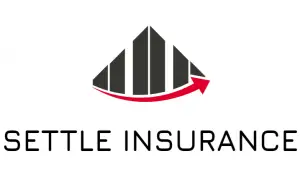“This post may contain affiliate links, if you click a link we may earn a commission if you purchase from that merchant.”
Home insurance is a crucial aspect of protecting your most valuable asset – your home. It provides financial coverage in the event of damage or loss caused by various perils such as fire, theft, vandalism, or natural disasters. Home insurance typically includes coverage for the structure of your home, personal belongings, liability protection, and additional living expenses if you are unable to live in your home due to covered damages.
There are different types of coverage available in home insurance policies. The most common types include dwelling coverage, which covers the structure of your home; personal property coverage, which covers your belongings; liability coverage, which protects you if someone is injured on your property; and additional living expenses coverage, which pays for temporary living arrangements if your home becomes uninhabitable.
Table of Contents
Key Takeaways
- Home insurance provides coverage for damages and losses to your home and personal belongings.
- Replacement cost coverage pays for the full cost of replacing damaged or lost items, while actual cash value coverage only pays for their depreciated value.
- Advantages of having replacement cost coverage include being able to fully replace damaged or lost items and avoiding out-of-pocket expenses.
- Factors that affect your replacement cost coverage include the size and age of your home, the materials used in construction, and the cost of labor and materials in your area.
- To obtain replacement cost coverage, you need to provide an accurate estimate of your home’s replacement cost and choose a policy that offers this type of coverage.
Understanding Replacement Cost Coverage
Replacement cost coverage is a type of coverage that ensures you will receive enough money to replace or repair damaged property with new items of similar kind and quality, without deducting for depreciation. This means that if your home or personal belongings are damaged or destroyed, the insurance company will provide you with enough money to replace them with new items, rather than reimbursing you for their depreciated value.
This type of coverage differs from actual cash value (ACV) coverage, which takes into account depreciation when determining the value of damaged or destroyed property. ACV coverage considers the age and condition of the item at the time of loss and provides reimbursement based on its current market value.
Replacement cost coverage is particularly beneficial in situations where the cost of replacing damaged or destroyed property has increased over time. For example, if you have an older home with outdated features, replacement cost coverage ensures that you can rebuild or repair your home with modern materials and finishes. Similarly, if you have valuable personal belongings such as electronics or jewelry, replacement cost coverage ensures that you can replace them with new items of similar kind and quality.
How Replacement Cost Coverage Differs from Actual Cash Value
Actual cash value (ACV) is a method of determining the value of damaged or destroyed property by taking into account depreciation. Depreciation is the decrease in value of an item over time due to factors such as age, wear and tear, and obsolescence. ACV coverage provides reimbursement for damaged or destroyed property based on its current market value, which is the replacement cost minus depreciation.
In contrast, replacement cost coverage provides reimbursement for damaged or destroyed property based on the cost of replacing it with new items of similar kind and quality, without deducting for depreciation. This means that replacement cost coverage typically provides higher reimbursement amounts compared to ACV coverage.
The choice between replacement cost coverage and ACV coverage depends on your individual needs and preferences. ACV coverage may be more suitable if you have older items that have significantly depreciated in value over time. However, replacement cost coverage is generally recommended for homeowners who want to ensure that they can fully replace their damaged or destroyed property with new items.
Advantages of Having Replacement Cost Coverage on Your Home Insurance
Having replacement cost coverage on your home insurance policy offers several advantages. Firstly, it provides peace of mind knowing that you will be able to fully replace or repair your damaged or destroyed property without having to bear the financial burden yourself. This can be especially important in the event of a major disaster such as a fire or natural disaster, where the cost of rebuilding or repairing your home can be substantial.
Secondly, replacement cost coverage can save you money in the long run. While the premium for replacement cost coverage may be slightly higher than that for actual cash value coverage, it can ultimately save you money if you need to make a claim. With replacement cost coverage, you will receive enough money to replace your damaged or destroyed property with new items, which may be more expensive than their depreciated value. This can help you avoid out-of-pocket expenses or having to settle for lower-quality replacements.
Lastly, replacement cost coverage ensures that your home is fully covered in the event of a loss. By providing reimbursement based on the cost of replacing damaged or destroyed property with new items, this type of coverage ensures that you can restore your home to its pre-loss condition without any compromises. This can be particularly important if you have made significant investments in your home or if you have unique features or finishes that would be difficult to replicate with older or lower-quality replacements.
Factors That Affect Your Replacement Cost Coverage
Several factors determine the replacement cost of your home, which in turn affects your replacement cost coverage. These factors include the size and layout of your home, the materials used in its construction, the quality of its finishes and fixtures, and the cost of labor and materials in your area.
The size and layout of your home play a significant role in determining its replacement cost. Larger homes generally have higher replacement costs due to the increased amount of materials and labor required for construction. Similarly, homes with complex layouts or unique architectural features may have higher replacement costs due to the specialized skills and materials needed for their reconstruction.
The materials used in the construction of your home also affect its replacement cost. Homes built with high-quality materials such as brick or stone tend to have higher replacement costs compared to those built with less expensive materials such as wood or vinyl siding. Additionally, homes with high-end finishes and fixtures may have higher replacement costs due to the increased cost of these items.
The cost of labor and materials in your area is another important factor that affects your replacement cost coverage. Construction costs can vary significantly depending on factors such as location, availability of skilled labor, and market conditions. It is important to consider these factors when determining the replacement cost of your home to ensure that you have adequate coverage.
How to Determine the Replacement Cost of Your Home
To determine the replacement cost of your home, you can follow a few steps. Firstly, calculate the square footage of your home by measuring the length and width of each room and multiplying them together. Add up the square footage of all rooms to get the total square footage of your home.
Next, consider the quality of your home’s construction and finishes. Homes with higher-quality materials and finishes generally have higher replacement costs. Take into account factors such as the type of exterior siding, roofing materials, flooring materials, and kitchen and bathroom fixtures.
Once you have determined the square footage and quality of your home, you can use online tools or consult with a professional appraiser to estimate the cost per square foot for rebuilding or repairing your home. Multiply the total square footage of your home by the cost per square foot to get an estimate of the replacement cost.
It is important to ensure that your replacement cost estimate is accurate to avoid being underinsured or overinsured. Being underinsured means that you may not receive enough money to fully replace or repair your damaged or destroyed property, while being overinsured means that you may be paying higher premiums than necessary. Regularly review and update your replacement cost estimate to account for any changes in construction costs or improvements made to your home.
How to Obtain Replacement Cost Coverage for Your Home Insurance
If you already have a home insurance policy and want to add replacement cost coverage, you can contact your insurance provider to discuss your options. In some cases, you may be able to add replacement cost coverage as an endorsement or rider to your existing policy. This will typically result in a slightly higher premium compared to actual cash value coverage.
If you are purchasing a new home insurance policy, you can choose a policy that includes replacement cost coverage from the start. When shopping for insurance, it is important to compare quotes from multiple providers to ensure that you are getting the best coverage and rates. Consider factors such as the reputation of the insurance company, the coverage limits and deductibles offered, and any additional benefits or discounts available.
When obtaining replacement cost coverage, it is important to review the policy carefully to understand any limitations or exclusions. Some policies may have specific requirements or conditions that must be met in order to receive full replacement cost reimbursement. For example, you may be required to insure your home for at least 80% of its replacement cost in order to receive full replacement cost coverage.
Comparison of Replacement Cost Coverage and Other Types of Home Insurance
When comparing replacement cost coverage to other types of home insurance coverage, it is important to consider the pros and cons of each type. Replacement cost coverage provides higher reimbursement amounts compared to actual cash value coverage, which can be beneficial if you need to fully replace or repair your damaged or destroyed property. It also provides peace of mind knowing that you will be able to restore your home to its pre-loss condition without any compromises.
However, replacement cost coverage may have higher premiums compared to actual cash value coverage. This is because the insurance company is assuming a higher risk by providing reimbursement based on the cost of replacing damaged or destroyed property with new items. Additionally, replacement cost coverage may not be suitable for all homeowners, especially those with older homes or items that have significantly depreciated in value.
Actual cash value (ACV) coverage takes into account depreciation when determining the value of damaged or destroyed property. This means that you may receive lower reimbursement amounts compared to replacement cost coverage. However, ACV coverage may be more affordable and suitable for homeowners with older homes or items that have significantly depreciated in value.
To determine which type of coverage is best for your needs, consider factors such as the age and condition of your home and personal belongings, your budget, and your risk tolerance. It may be helpful to consult with an insurance professional who can provide guidance based on your specific circumstances.
Replacement Cost Coverage for Renters Insurance
Replacement cost coverage is not limited to homeowners insurance – it is also available for renters insurance. Renters insurance provides coverage for your personal belongings and liability protection in the event of damage or loss caused by various perils such as fire, theft, or vandalism.
Having replacement cost coverage for renters insurance ensures that you will receive enough money to replace your damaged or stolen belongings with new items of similar kind and quality. This can be particularly important if you have valuable items such as electronics, furniture, or jewelry. Without replacement cost coverage, you may only receive reimbursement based on the depreciated value of your belongings, which may not be enough to fully replace them.
To obtain replacement cost coverage for renters insurance, you can contact your insurance provider to discuss your options. Similar to homeowners insurance, you may be able to add replacement cost coverage as an endorsement or rider to your existing policy. Alternatively, you can choose a policy that includes replacement cost coverage from the start when purchasing renters insurance.
The Importance of Insuring Your Home with Replacement Cost Coverage
In conclusion, insuring your home with replacement cost coverage is crucial to ensure that you can fully replace or repair your damaged or destroyed property without bearing the financial burden yourself. This type of coverage provides higher reimbursement amounts compared to actual cash value coverage and offers peace of mind knowing that your home is fully covered.
Factors such as the size and layout of your home, the materials used in its construction, and the cost of labor and materials in your area affect the replacement cost of your home and in turn, your replacement cost coverage. It is important to regularly review and update your replacement cost estimate to ensure that you have adequate coverage.
Whether you are a homeowner or renter, it is important to consider the benefits of having replacement cost coverage for your home insurance or renters insurance. By understanding the different types of coverage available and comparing quotes from multiple providers, you can ensure that you have the best coverage and rates for your needs. Review and update your home insurance policy regularly to ensure that you have adequate coverage and peace of mind knowing that your home is protected.
If you’re interested in learning more about home insurance, you may also want to check out this article on “The Best Renters Insurance Companies” https://settleinsurance.com/home-insurance/best-renters-insurance-companies/. It provides valuable information on the top insurance companies that offer renters insurance, helping you find the best coverage for your needs.
FAQs
What is replacement cost coverage?
Replacement cost coverage is a type of home insurance policy that covers the cost of replacing your damaged or destroyed property with new items of similar kind and quality, without taking into account depreciation.
How is replacement cost coverage different from actual cash value coverage?
Actual cash value coverage takes into account depreciation when determining the value of your damaged or destroyed property, while replacement cost coverage does not. This means that replacement cost coverage will typically provide a higher payout in the event of a claim.
What types of property are covered under replacement cost coverage?
Replacement cost coverage typically covers the structure of your home, as well as personal property such as furniture, appliances, and electronics.
Are there any limitations to replacement cost coverage?
Yes, replacement cost coverage may have certain limitations, such as coverage limits for certain types of property or exclusions for certain types of damage. It is important to review your policy carefully to understand any limitations or exclusions.
How is the replacement cost of my property determined?
The replacement cost of your property is typically determined by an appraisal or estimate that takes into account the cost of materials and labor needed to replace the damaged or destroyed property with new items of similar kind and quality.
Is replacement cost coverage required by law?
No, replacement cost coverage is not required by law. However, it may be required by your mortgage lender or recommended by your insurance agent to ensure that you have adequate coverage in the event of a claim.



































